Record Overtourism Strikes Mykonos and Santorini
Mykonos and Santorini experience a European…
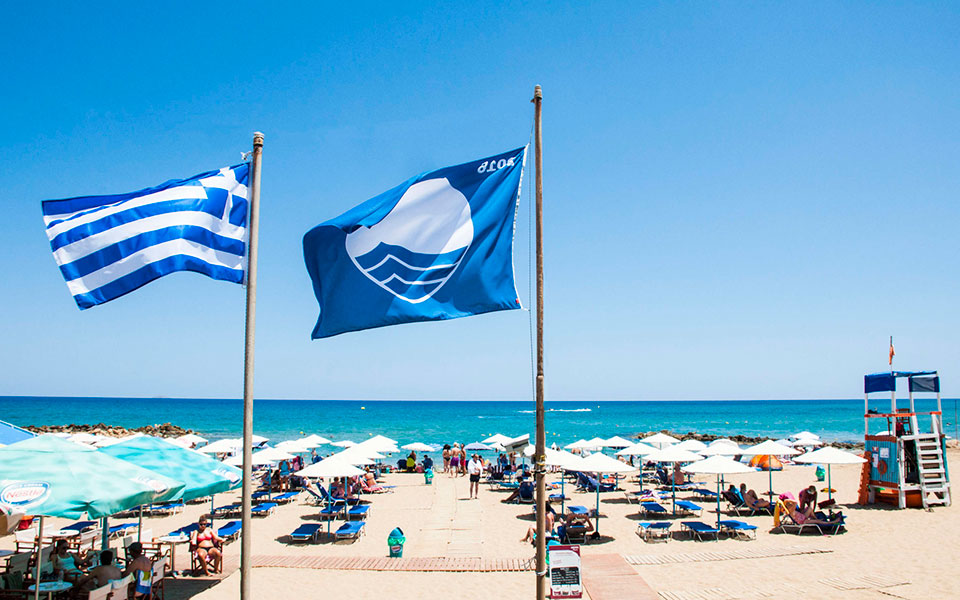
Kokkini Hani, Crete
© Hellenic Society for the Protection of Nature (Creative Commons License BY-NC-SA 3.0)
The number of Blue Flags awarded in Greece rose again this year. Last year, 486 beaches and 12 marinas were honored with a flag. This year, the numbers are up to 519 and 15, respectively with the addition of 1 Blue Flag for a tourism boat.
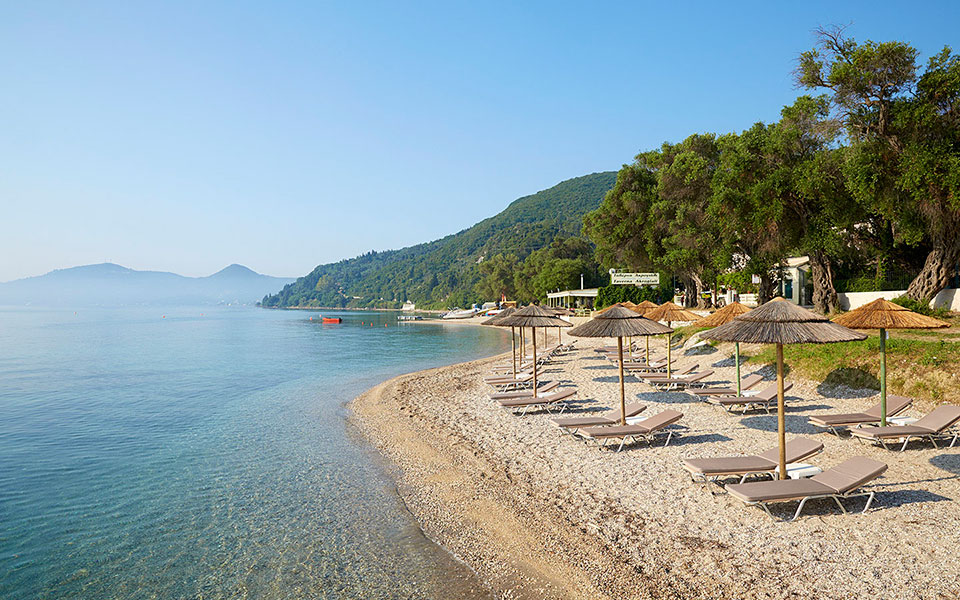
Aghios Ioannis Peristerion, Corfu
© Hellenic Society for the Protection of Nature (Creative Commons License BY-NC-SA 3.0)
Blue Flag, which is operated by the non-profit Foundation of Environmental Education (FEE) with the aim of promoting sustainable tourism worldwide, is one of the most respected eco-labels there is.
Operating since 1987, a total of 3,687 beaches were awarded this year, and Greece has the second largest number of Blue Flag awarded beaches in the world, second only to Spain.
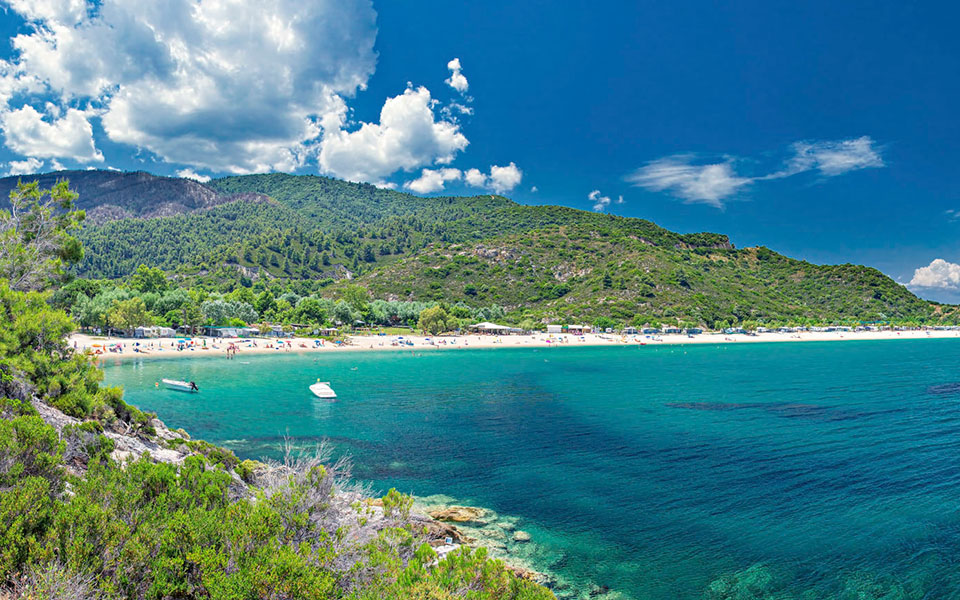
Armenestis beach, Sithonia, Halkidiki
© Hellenic Society for the Protection of Nature (Creative Commons License BY-NC-SA 3.0)
Don’t misread the high numbers as an indication that a Blue Flag is easy to get, or that all it indicates is a clean beach. The criteria for receiving it include everything from public access to building maintenance. For example, the guidelines suggest that all sensitive habitats, like coral reefs, located within 500 meters from the beach should be monitored. It is also recommended that the beach be easily accessible, and that sustainable means of transport should be encouraged (meaning that public transport to the beach and providing bicycle parking can get an operator closer to receiving the flag).
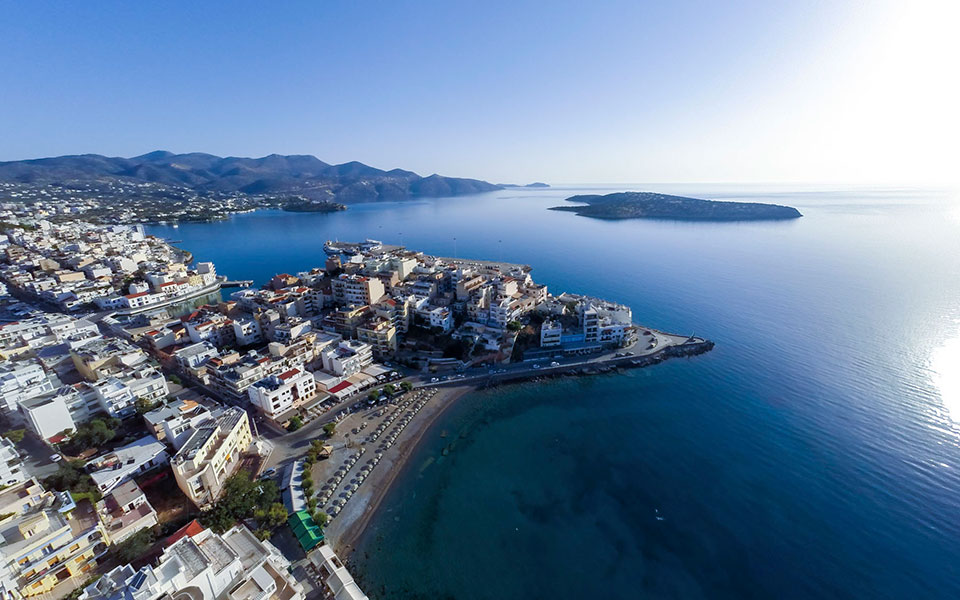
Kitroplateia, Crete
© Hellenic Society for the Protection of Nature (Creative Commons License BY-NC-SA 3.0)
Some criteria are obvious, like providing sufficient waste bins and recycling stations, while others require strategizing and a lot of work. How to deal with seaweed on the beach is one of the more complicated issues, as, on the one hand, removal of algal vegetation and natural debris is not recommended, though on the other, it may cause disturbances (like beach access and odors) for beach-goers.
Other issues that may prevent many Greek beaches from receiving a Blue Flag is the presence of stray animals, and the absence of lifeguards and access points for the disabled.
The requirements for marinas and tourism boats are just as strict. (See all the requirements here.)
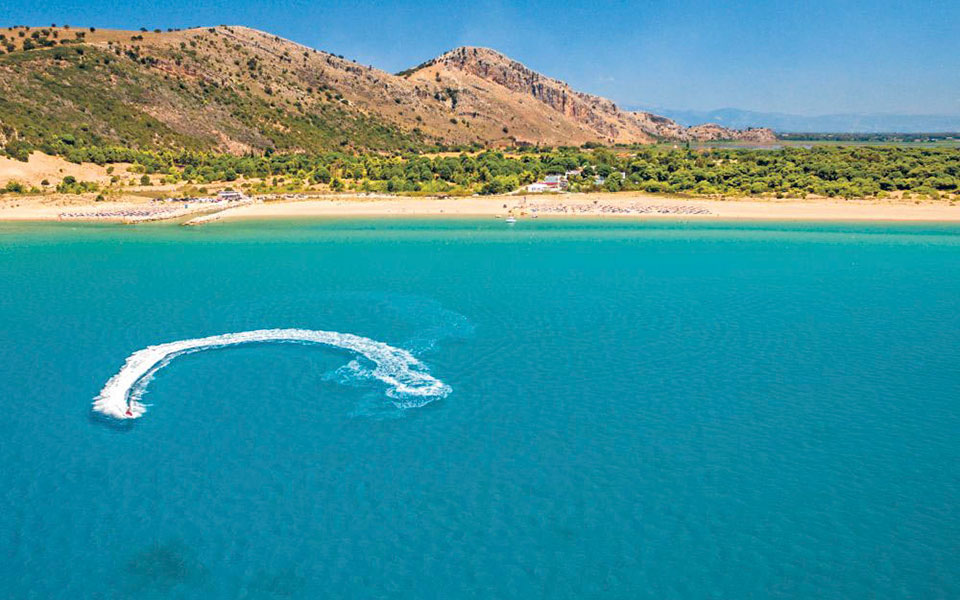
Kalogria beach, Peloponnese
© Hellenic Society for the Protection of Nature (Creative Commons License BY-NC-SA 3.0)
The Greek island with the most Blue Flag awarded beaches this year is Crete, with 114 flags (including 1 marina) spread over its four regional units. The single regional unit with the most flags is the Halkidiki peninsula, in northern Greece, where you’ll find as many as 85 Blue Flag beaches, 3 marinas and 1 tourism boat.
The boat, which is the first one to be awarded a flag in Greece, is the Sani Swan from company AllinBlusive: a vessel that’s extremely fuel efficient thanks to its IPS propulsion system.
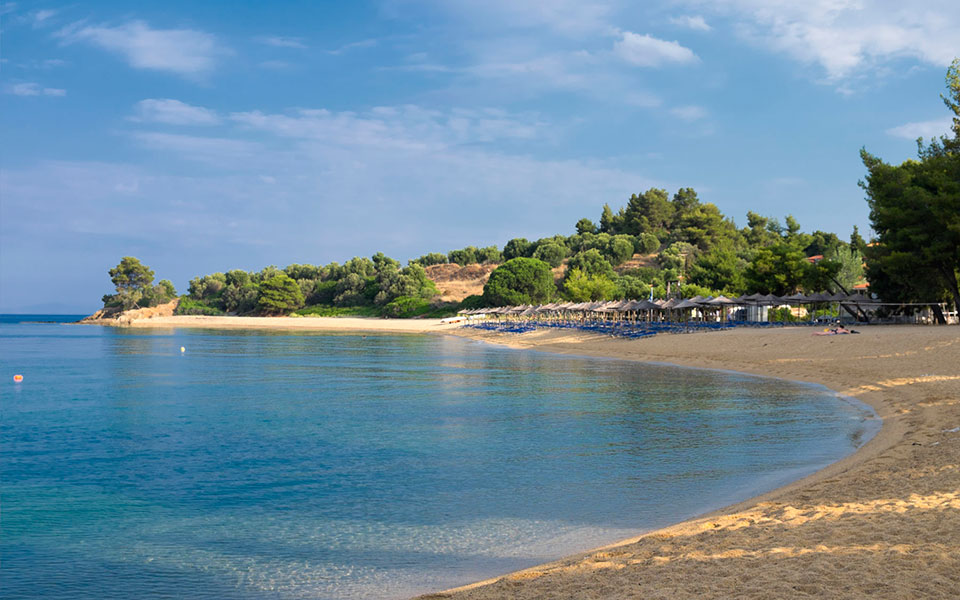
Lagomandra beach, Sithonia, Halkidiki
Other islands with many awarded beaches are Rhodes, which received 35 Blue Flags, and Zakynthos, with 18. Attica, the regional unit surrounding Athens, received 24 flags, including 4 marinas, despite last summer’s oil spill in the Saronic Gulf.
The sinking of the tanker which caused the damage was followed by a large clean-up operation including the use of floating dams and chemicals to disperse the spillage along the coast. In April the Shipping Ministry declared the operation complete and Attica’s beaches safe for swimmers, with the exception of Salamina’s Limnionas Bay, Selinia and Themistokleous coast.
Mykonos and Santorini experience a European…
Greece maintains second place globally at…
The Association of Greek Tourism Enterprises…
A total of 617 beaches in…